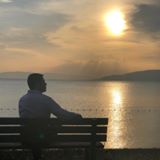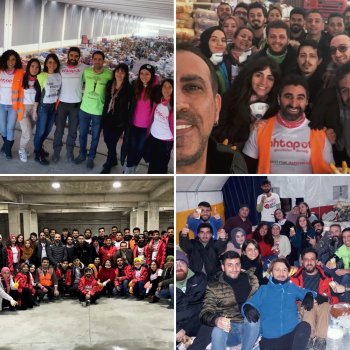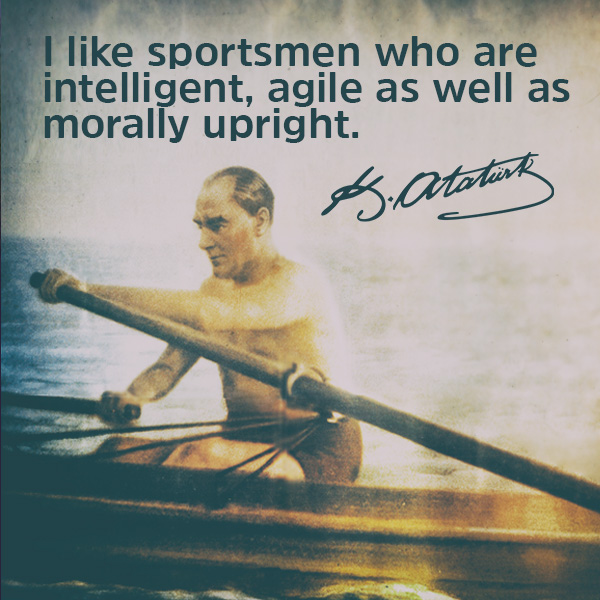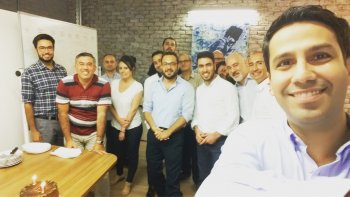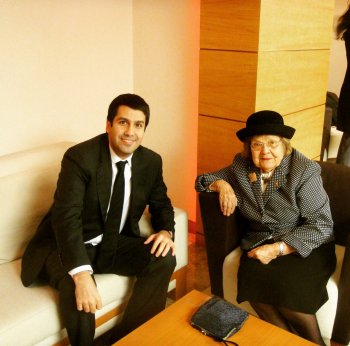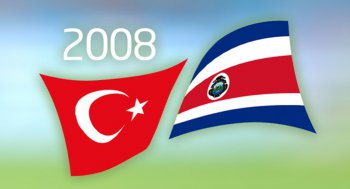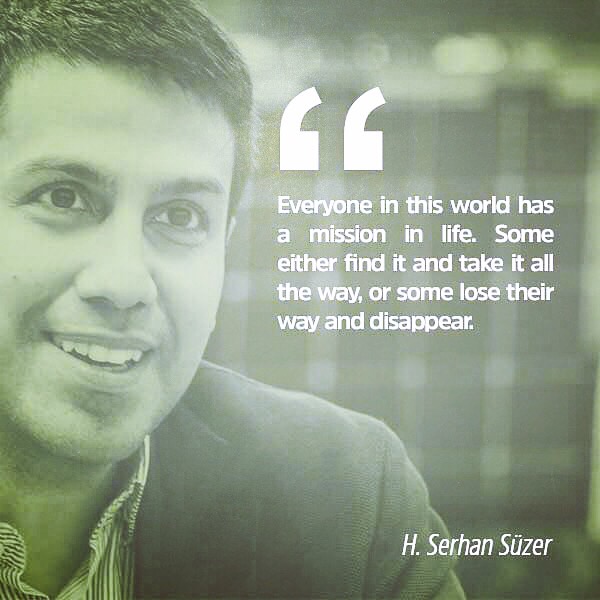ALS Ice Bucket Challenge
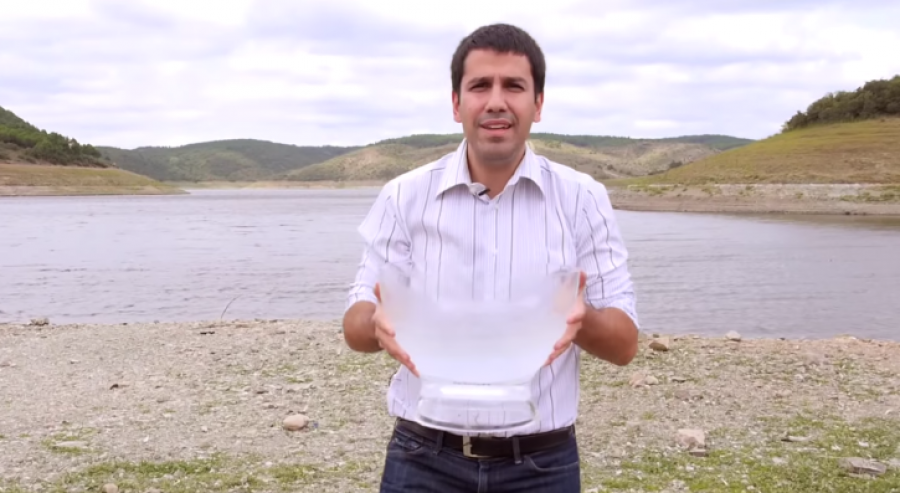
The “ALS Ice Bucket Challenge” has swept the world, with videos taken all across Turkey also going viral in Turkish social media.
I participated in this worthy challenge but my video features a twist. Right from the outset I’d felt that certain aspects of these videos, although attention-grabbing and beneficial in their way, didn’t fully serve the purpose of the campaign. Fun only goes so far…
This campaign launched by internationally famous figures to promote awareness of the disease of ALS and to encourage donations has enjoyed phenomenal success, with millions of people posting films from hundreds of countries.
I doubt those who originated the campaign had any idea it would spread so far so fast. However, the very nature of this charitable drive, in an age when it is so easy to take videos and post them to a variety of social media outlets sites, perhaps made it inevitable that it would quickly spread to the masses. The influential role social media now plays in our lives has certainly been demonstrated once again.
I consider this campaign to be successful in terms of raising awareness of the disease of ALS and offer my heartfelt congratulations to everyone who has participated to try to make a difference.
However, there are a few aspects of the campaign which have given me pause ever since it went viral. The first is the misperception that all it involves is the making of an entertaining video in which the participant pours a bucket of ice water over his or her head, which is an approach at odds with the real purpose of the campaign.
The second thing that has bothered me ever since the first time I watched one of these films is that for those of living in Turkey, as well as in various other regions around the world, the year 2014 will be remembered for a drought of historic proportions. While a bucket of water spilled onto the ground is relatively unproblematic, it’s disturbing to think that millions of buckets of water were wasted to make these videos.
Finally, I decided to take action and planned a video that would reflect my reservations. I shared my idea with others close to me, and after contacting the production company 4951 we scheduled a film shoot for the following Saturday.
Filming began at the Alibeyköy Reservoir, on the European side of Istanbul. Unlike our shoot with the ALS/MNH Association, the outline and editing of this first segment was carefully planned from the start. Once we’d secured an “ice bucket” and a small tank of ice from the Ritz-Carlton Hotel, we transported the 4951 crew to the reservoir and got to work.
I recited the lines I’d prepared prior to the shoot. I have to admit I found the filming we did in the vicinity of the reservoir to be quite challenging. It was an extremely windy day. Just as I was delivering my lines a strong gust of wind would kick up, distorting the sound recording. “Stop. Cut. Start again from the beginning,” I was repeatedly instructed, making it difficult for me to concentrate. It’s for this reason that I’ve always been more comfortable on live broadcasts. If there are no interventions I forget the cameras are even there and simply focus on what I need to say. An example of that is my appearance on the “Green Economy/Yeşil Ekonomi” program presented by Celal Toprak on September 9, 2014, for which you’ll find a link here:
Once we’d finished shooting at the Alibeyköy Reservoir, we were off to the ALS/MNH Association. I had arranged to meet later that Saturday afternoon with İsmail Gökçek, who is the chairman of the ALS/MNH Association, the only organization in Turkey to advocate for sufferers of the disease.
My reason for meeting with İsmail Gökçek was to make a video that would truly help raise awareness of and solicit support for ALS patients. I had previously prepared some questions I wanted to ask. Once we arrived at the ALS/MNH Association all of my questions were answered and the film more or less shot itself.
First, I chatted with him and asked how we could help. He told me the Association had received TL 840,000 in donations since the launch of the ALS Ice Bucket Challenge, but would need a total of TL 15 million to achieve their goal of opening seven ALS clinics in seven different provinces. The first ALS Clinic would be opened in Istanbul, with the rest gradually spreading to other regions. I told him I would make a personal donation of TL 10,000 and that, in addition to the video we were shooting that day, I would do everything I could to support his cause.
Once I had a clear understanding of what was needed, I called in our friends from the production company. I told them that the video we were about to shoot would promote the opening in seven provinces of seven ALS clinics. Everything that followed was spontaneous and the result was an enjoyable and informative film of my conversation with İsmail Bey.
Before I continue, let me provide a little background information about ALS, cribbing from Vikipedi, the Turkish Wikipedia:
Amyotrophic lateral sclerosis (ALS) is a progressive neuromuscular disorder that leads to the gradual degeneration of motor nerve cells in the brain and the spinal cord. It is characterized by muscle spasticity and rapidly progressive weakness due to muscle wasting, resulting in difficulty speaking, swallowing, and breathing.
Symptoms of the disease include twitching and cramping of the muscles, loss of motor control in hands and arms, weakness and fatigue, slurred speech and difficulty speaking. The parts of the body affected by early symptoms of ALS depend on which motor neurons in the body are damaged first.
About 25% of cases are “bulbar onset” ALS. These people first notice difficulty speaking clearly or swallowing. Speech may become slurred, nasal in character, or quieter. Other symptoms include difficulty swallowing and loss of tongue mobility.
Eventually most people are not able to walk or use their hands and arms. They also lose the ability to speak and swallow food, while most end up on a portable ventilator.
The disease is estimated to affect about 1.5 people per 100,000 per year. Although it usually starts around the age of 60, there are cases where the age of onset is much earlier.
Awareness of ALS in Turkey increased greatly after it affected well-known footballers Sedat Balkanlı, who played for Galatasaray and Fenerbahçe, and İsmail Gökçek, who played for Trabzonspor. A critical defensive player famed for his header goals, Sedat was diagnosed with the disease in 1997 and succumbed to it in 2009.
Returning to the story of İsmail Gökçek, he is one of Trabzonspor’s early professional players. Born in Sivas in 1963, İsmail Gökçek was transferred in June of 1988 from Bakırköyspor to Trabzonspor during the club management of Werner Biskup. A team fixture during his first two seasons at Trabzonspor, Gökçek retired from football in the ’98-’99 season at age 35.
Upon his retirement as an active player, İsmail Gökçek became an assistant to Sakaryaspor technical director Giray Bulak. It was then that he began experiencing numbness in his fingers and difficulty speaking, and was diagnosed with ALS.
In 2001, Gökçek established the ALS/MNH Association with his wife, Adalet Gökçek, the wife of Sedat Balkanlı, Şükran Balkanlı, and seven others. Currently acting chairman of the association, Gökçek lives in the Istanbul district of Ataköy with his wife and two children.
İsmail Bey, who has lived with this disease for 15 years, is able to communicate only with the assistance of a computer and requires ventilator support to breath, has found his greatest support in his wife, Adalet. In an age when so many relationships founder and mutual respect is harder than ever to forge, Adalet remains committed to the “in sickness and in health” part of their wedding vows and has been a rock to her husband throughout. Let me pause here to express my admiration for her.
İsmail Bey is an engaging and loveable man, as you can see from a partial transcription of our conversation below:
H. Serhan Süzer (HSS): “My mother’s side of the family is from Trabzon, İsmail Bey. That gives us something in common.”
Adalet Hanım: “Actually, we’re from Sivas, but because İsmail played football for Trabzon at a critical point in his career everyone assumes we’re from Trabzon. We don’t correct them anymore. We’re happy to be considered to be from Trabzon. Trabzonspor has been a huge part of our lives.”
HSS: “Well anyway, my grandfather is from Malatya, which is near Sivas. But it’s always been my connection to Trabzon I’ve taken pride in. We carry Trabzon in our hearts everywhere we go, don’t you agree?”
İsmail Bey and his wife smiled, and she said, “Yes, we take Trabzon with us wherever we go.”
HSS: “Roughly how many ALS patients are there in Turkey?”
İsmail Gökçek: “About 6000-7000.”
HSS: “Are the ALS patients concentrated in a particular region or are they spread across Turkey.”
İG: “There are ALS patients everywhere in Turkey. That’s why we aim to open seven clinics in seven provinces. Naturally, the first one would be in Istanbul…”
HSS: “Is this disease genetic or does in develop in later life, İsmail Bey?”
İG: “Both. It isn’t always genetic.”
HSS: “How long have you been suffering from this disease?”
İG: “15 years.”
HSS: “How were you first diagnosed?”
İG: “I was 35, had recently retired from football and was working as an assistant to Giray Bulak at Sakaryaspor. That’s the year I was diagnosed.”
HSS: “When did you found the association?”
İG: “In 2001.”
HSS: “You found the association two years after being diagnosed?”
İG: “Yes, I saw the need for it. Nobody knew what ALS was.”
HSS: “Let me congratulate you on your efforts.”
İG: “Thank you.”
HSS (Pointing to a picture on the wall): “Isn’t that Sedat, the footballer who used to play for Galatasaray and Fenerbahçe?”
İG: “That’s right, it’s Sedat. Unfortunately we lost him. “
HSS: “My condolences.”
HSS: “Your foundation is called the ‘ALS/MNH Association. The ALS part is clear, but what does MNH mean, İsmail Bey?”
İG: “The same thing. ALS stands for Amyotrophic Lateral Sclerosis, while MNH stands for Motor Neuron Disease, a group of conditions that includes ALS. Americans tend to use ‘ALS,’ while Brits use ‘MNH.’ They’re basically talking about the same disease, though.”
HSS: “Is ALS curable?”
İG: “Unfortunately not. It is not possible at the moment to fully treat or cure ALS. Scientists are hard at work across the world but they haven’t yet found a cure.”
HSS: “Everyone should fully support the R&D for this. I hope they find a cure soon.”
İG: “So do I. The only thing we can do right now is to ensure that the patient is well cared for. And that’s why we need a clinic.”
HSS: “I’ll do all I can, İsmail Bey. Meanwhile, is there a particular match you’d consider to be unforgettable?”
İG: “Yes. I’ll never forget the matches Trabzon played against Lyon and Barcelona. We beat those teams back in the early ‘90s.”
HSS: “It’s an incredible achievement to have come out on top against those teams way back then. Congratulations.”
İG: “Thank you. It’s true, back then we didn’t often see Turkish teams score victories over international ones. I’m proud to this day of those matches.”
He beckoned to me with eyes. I went up to him and this time he indicated with his eyes that he wanted me to look at his computer. I did so. He used a sensor attached to his forehead to play a video showing the goals scored against Lyon by Trabzonspor. I’ll never forget the look of pride on his face. I congratulated him for the contribution he has made to Turkish football. “Good for you!” I said, taking my seat.
After our chat his wife asked me if I’d like to join their association. I responded that I’d be thrilled to, and filled out the form they gave me. And so it was that I became a member.
I’d like to share with you our ‘ALS Ice Bucket Challenge’ and an edited version of the conversation transcribed above:
I’m sure you’ll enjoy watching it as much as I enjoyed making it.
This project gave me a true sense of accomplishment. I’d like to thank everyone at the 4951 production company who worked on it, including Serkan Koç, Burak Kum, İhsan Ezer and Ahmet Mahir Kar.
The video has been well received by everyone who has seen it, and was designated a model film from among the ALS Ice Bucket Challenge films submitted to the Digital Health conference. I’d also like to thank Sinem for informing me of this exciting news. Here is some footage from the conference.
Finally, I’d like to invite everyone from businessmen to politicians, from high-ranking bureaucrats to the directors of NGOs, from opinion leaders to anyone interested in making the world a better place, to get more involved in helping to create a brighter future. Fun only goes so far. Nothing compares to the sense of achievement and gratification gained by helping others. I call on more people to get involved. Even as you work for others, don’t put off until tomorrow the joys you can experience in life today, and never forget how precious good health is.
Tag: sağlık